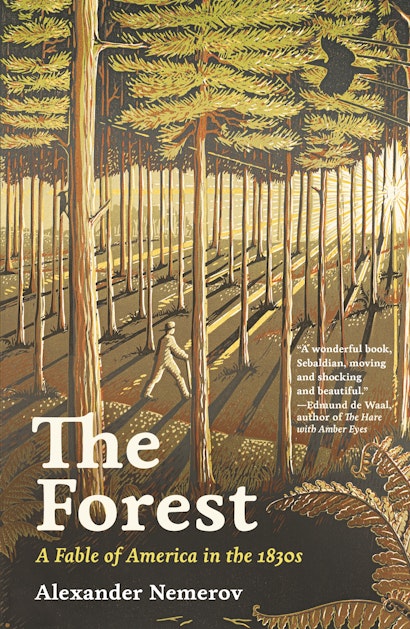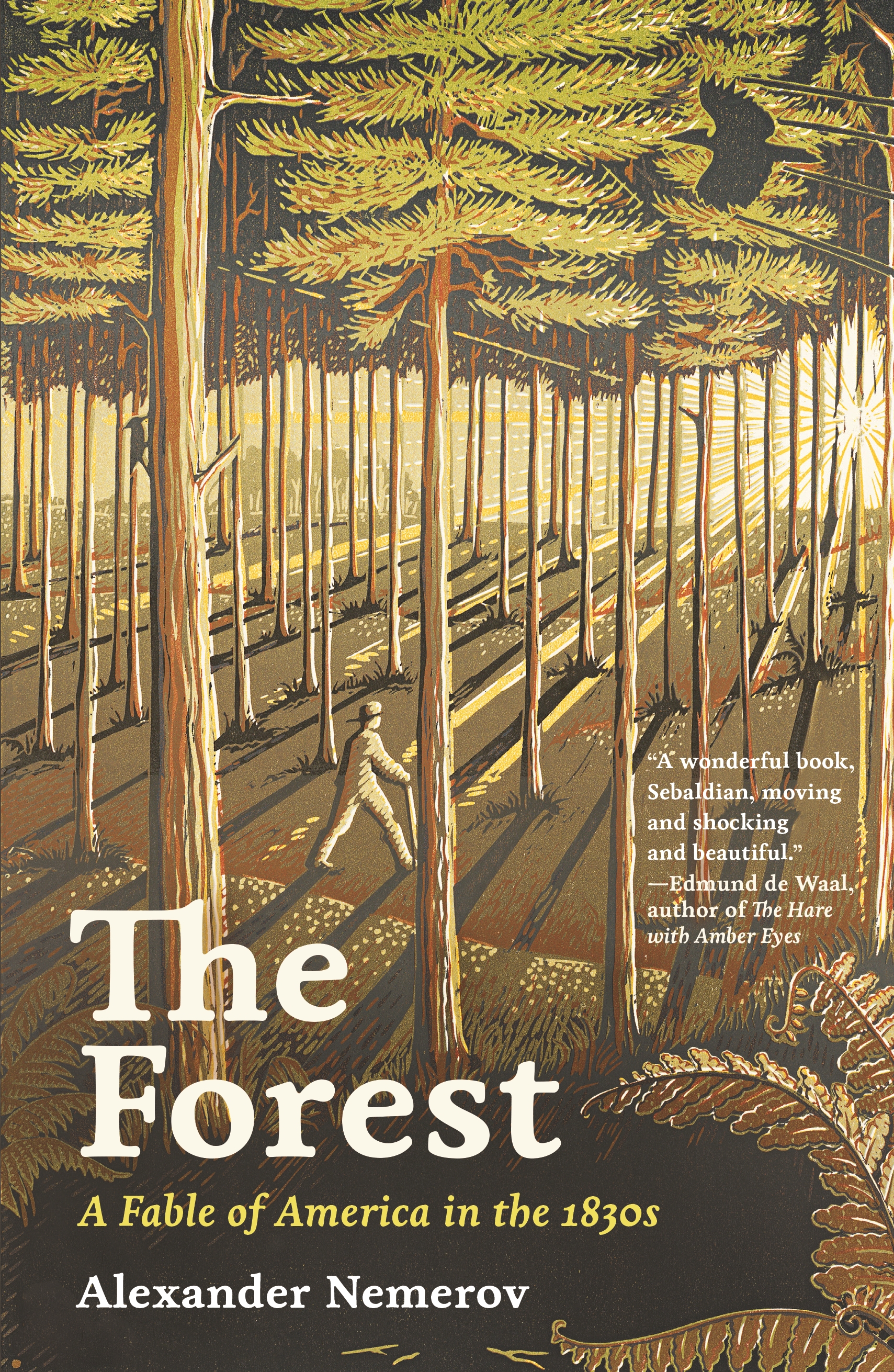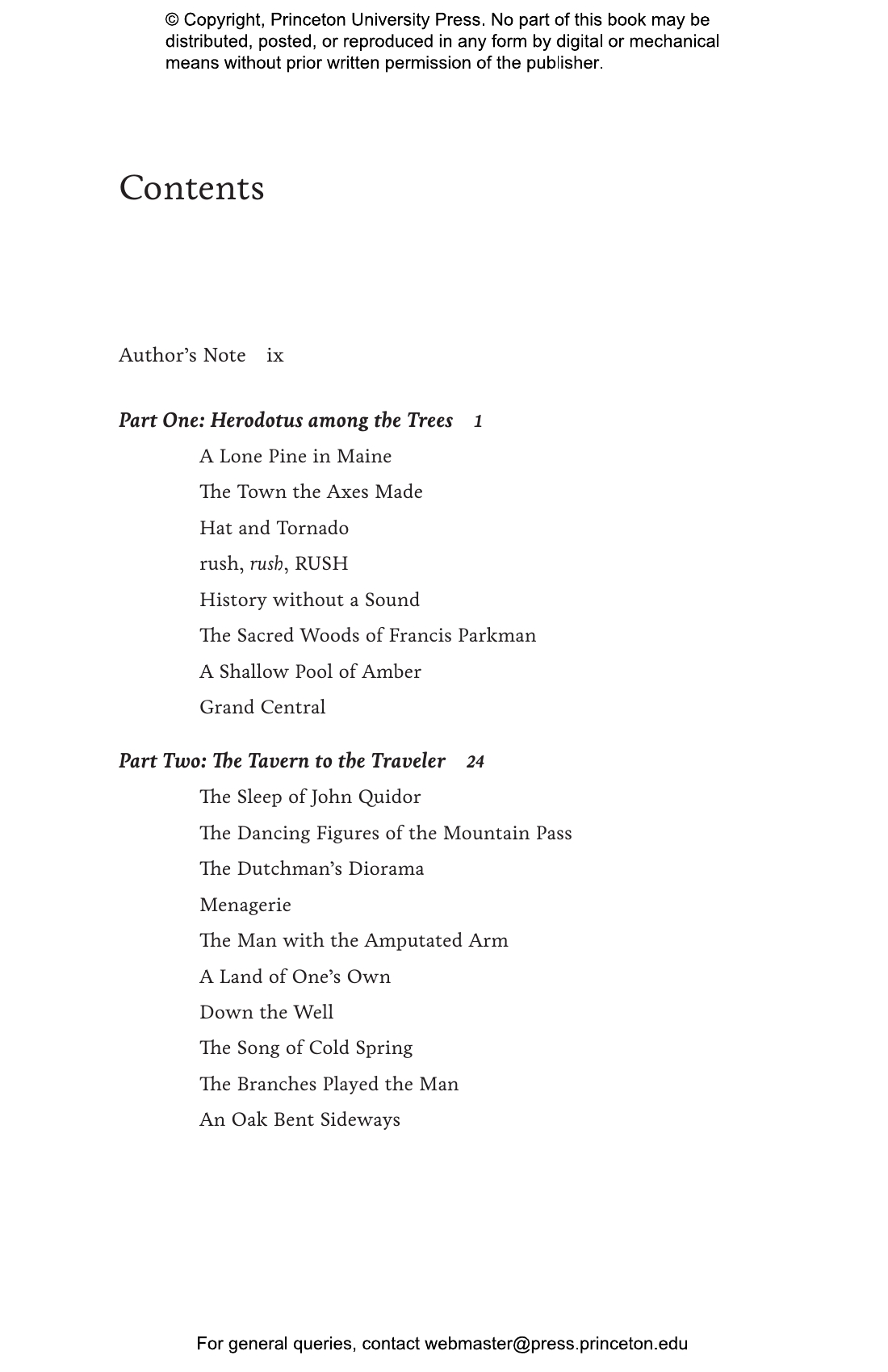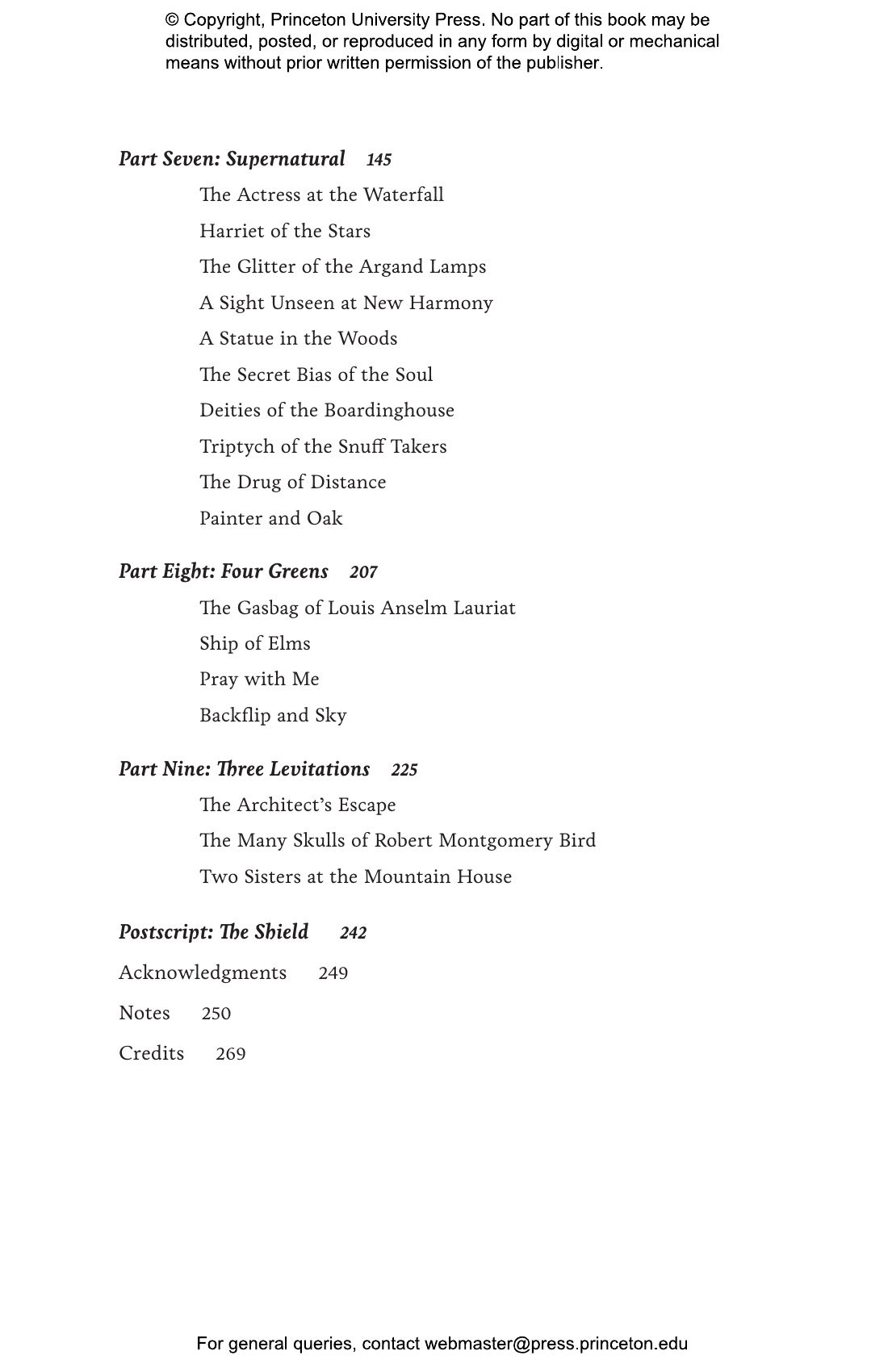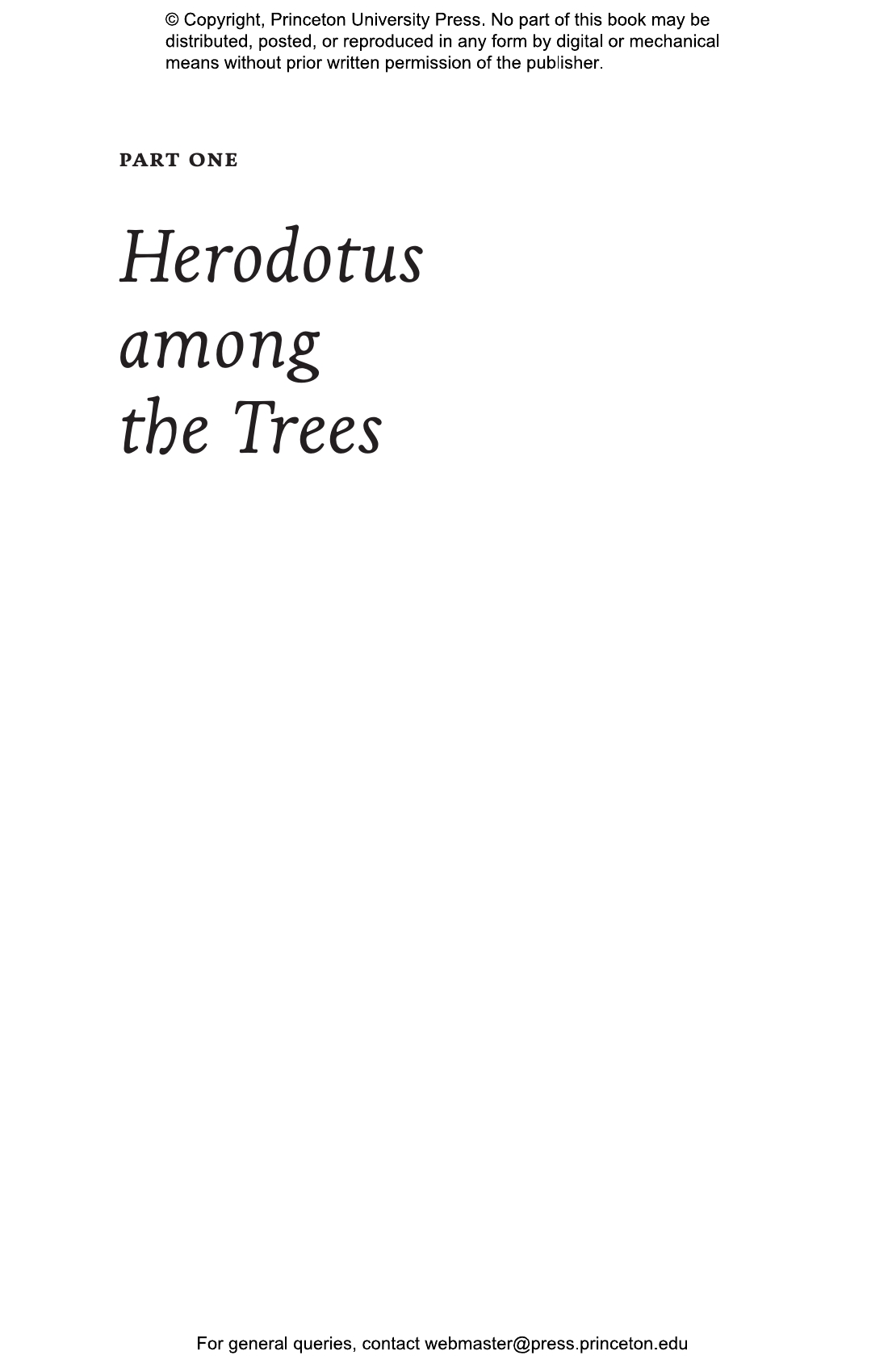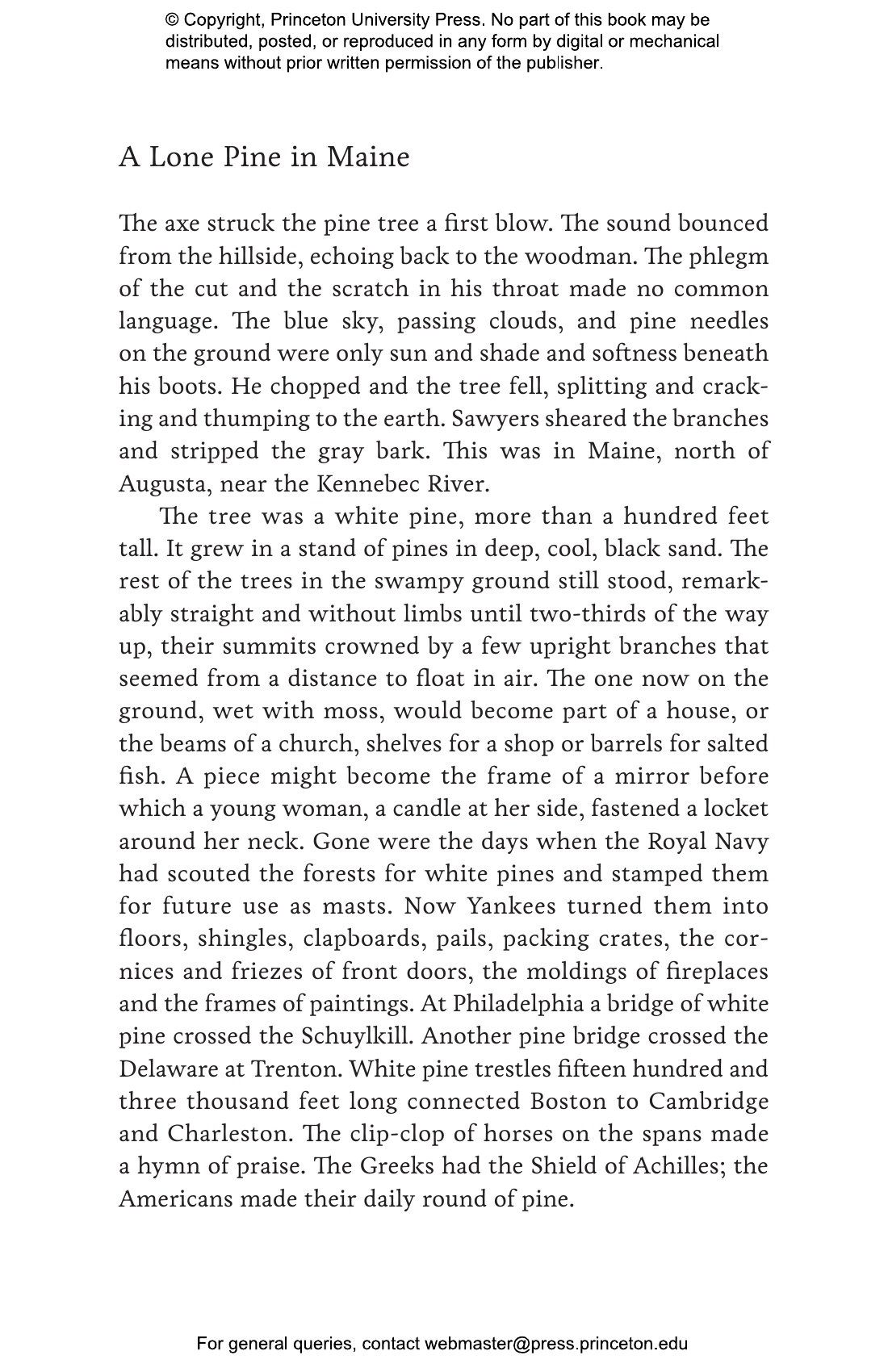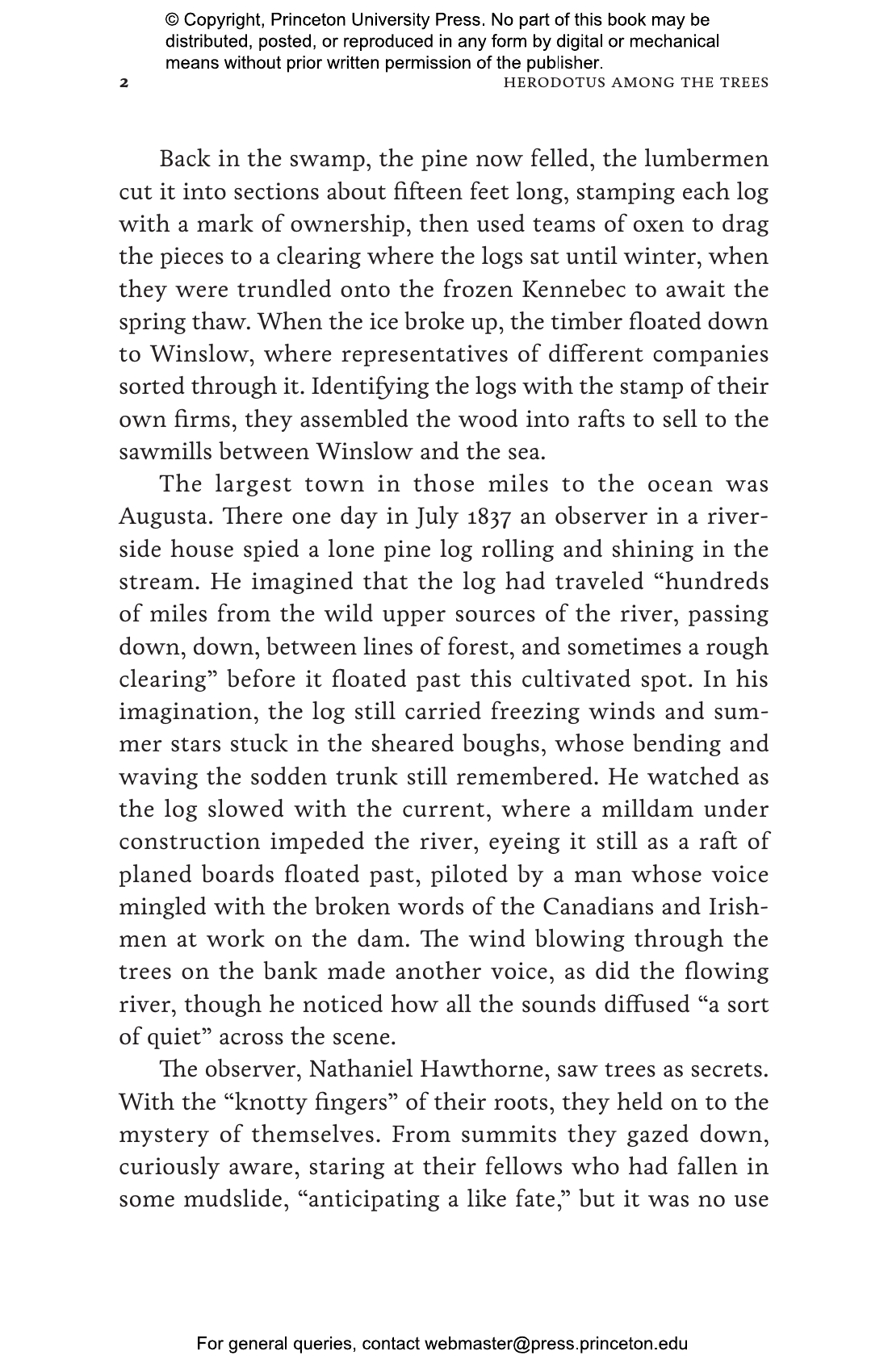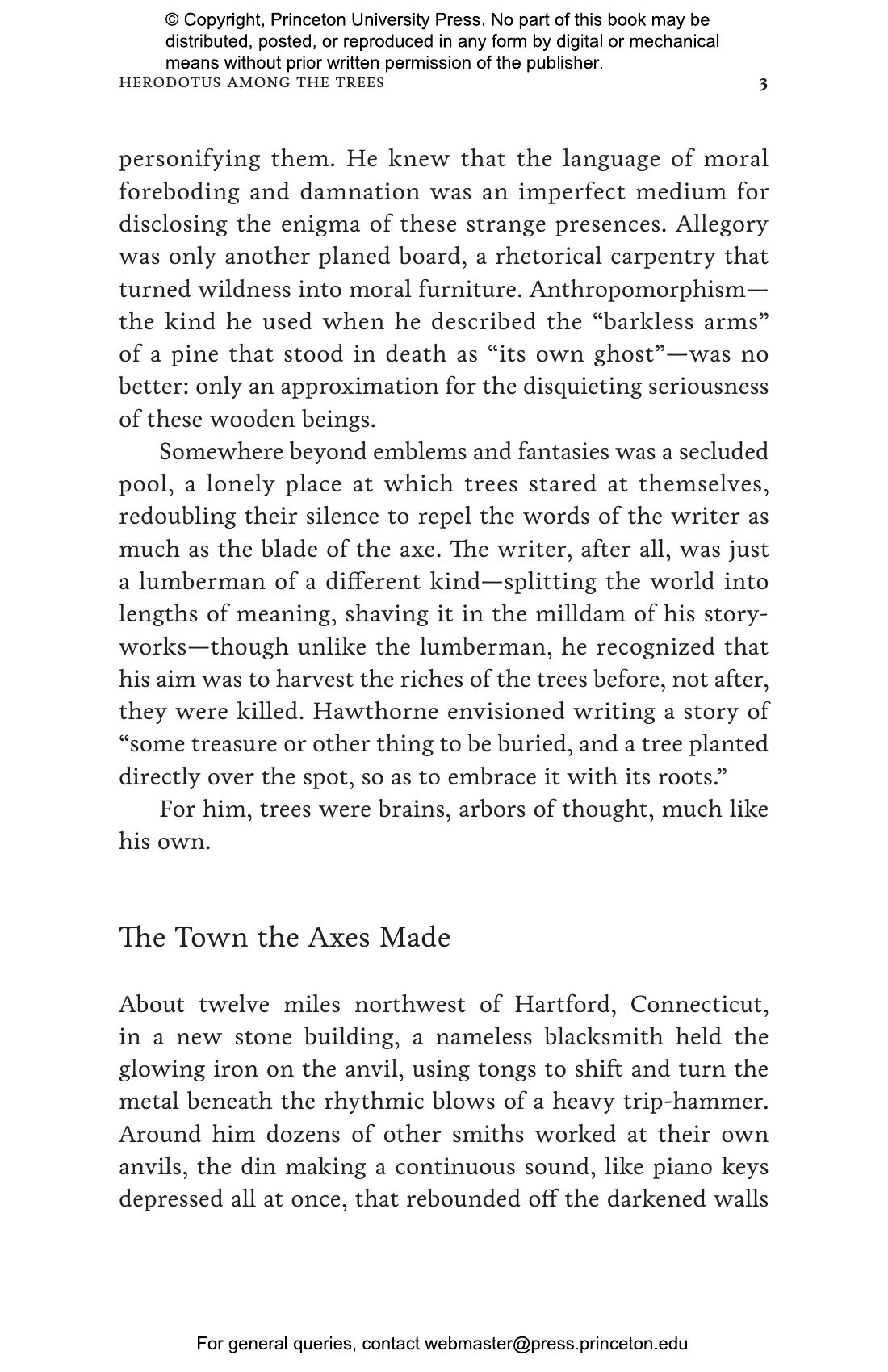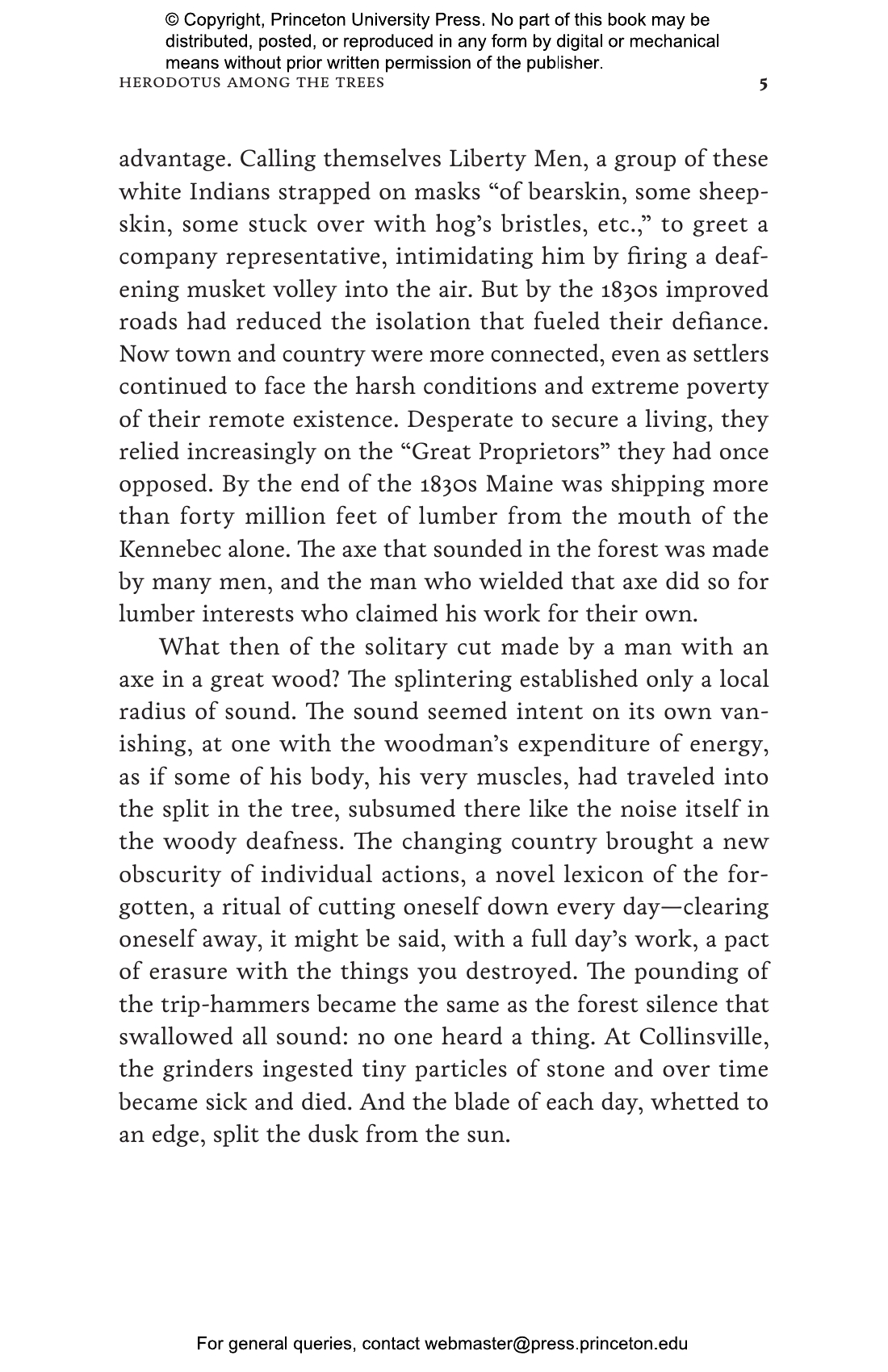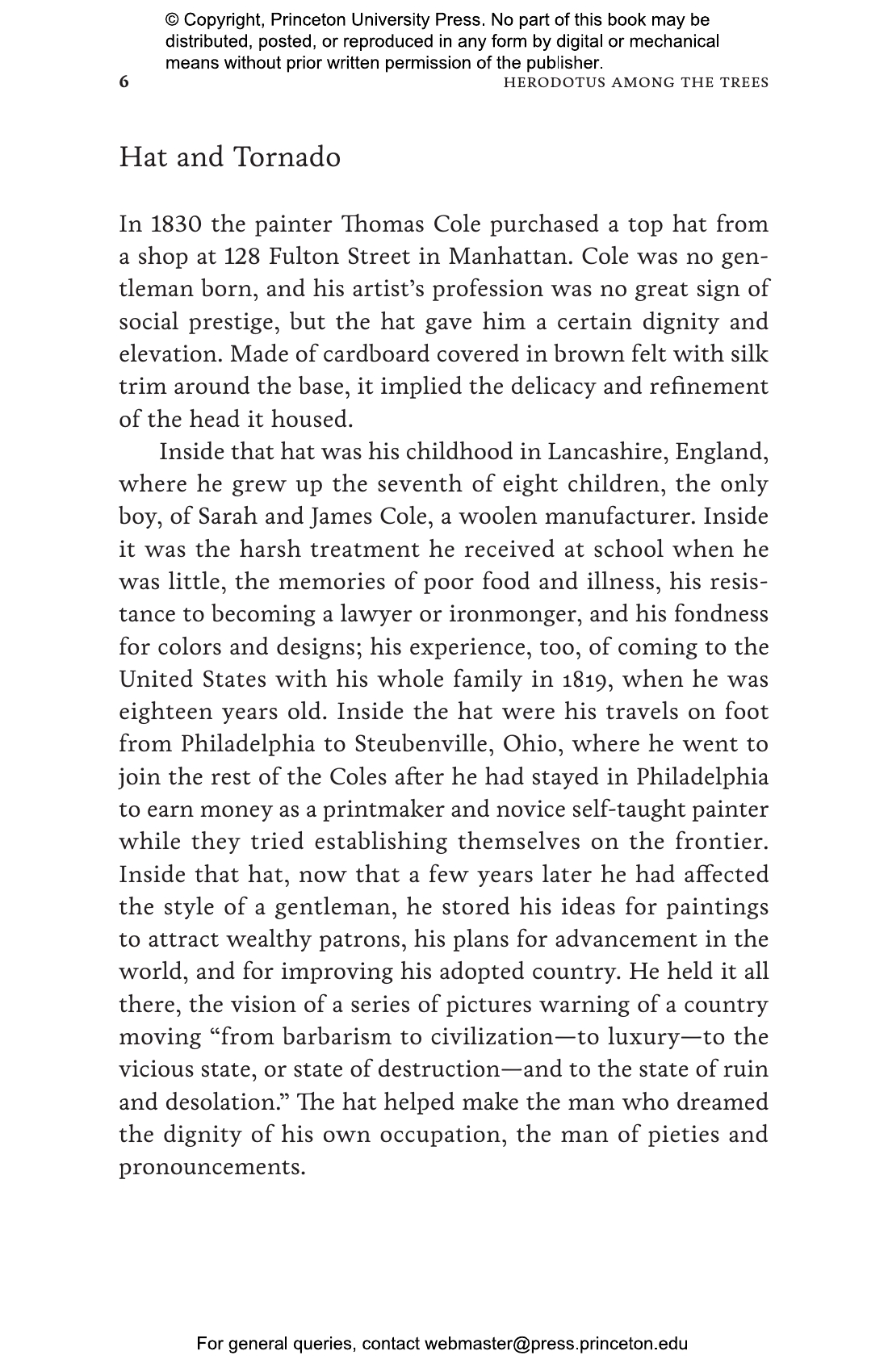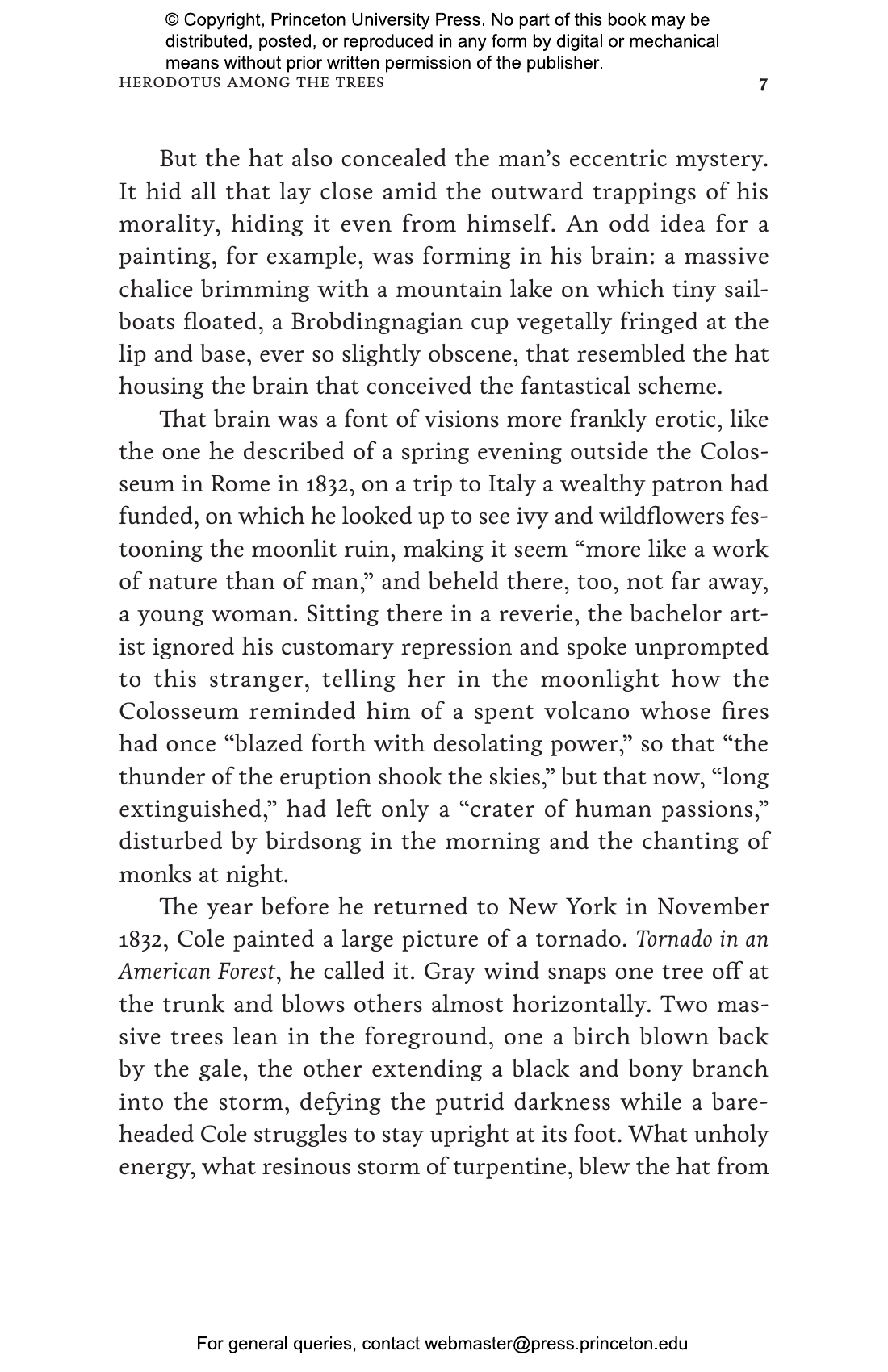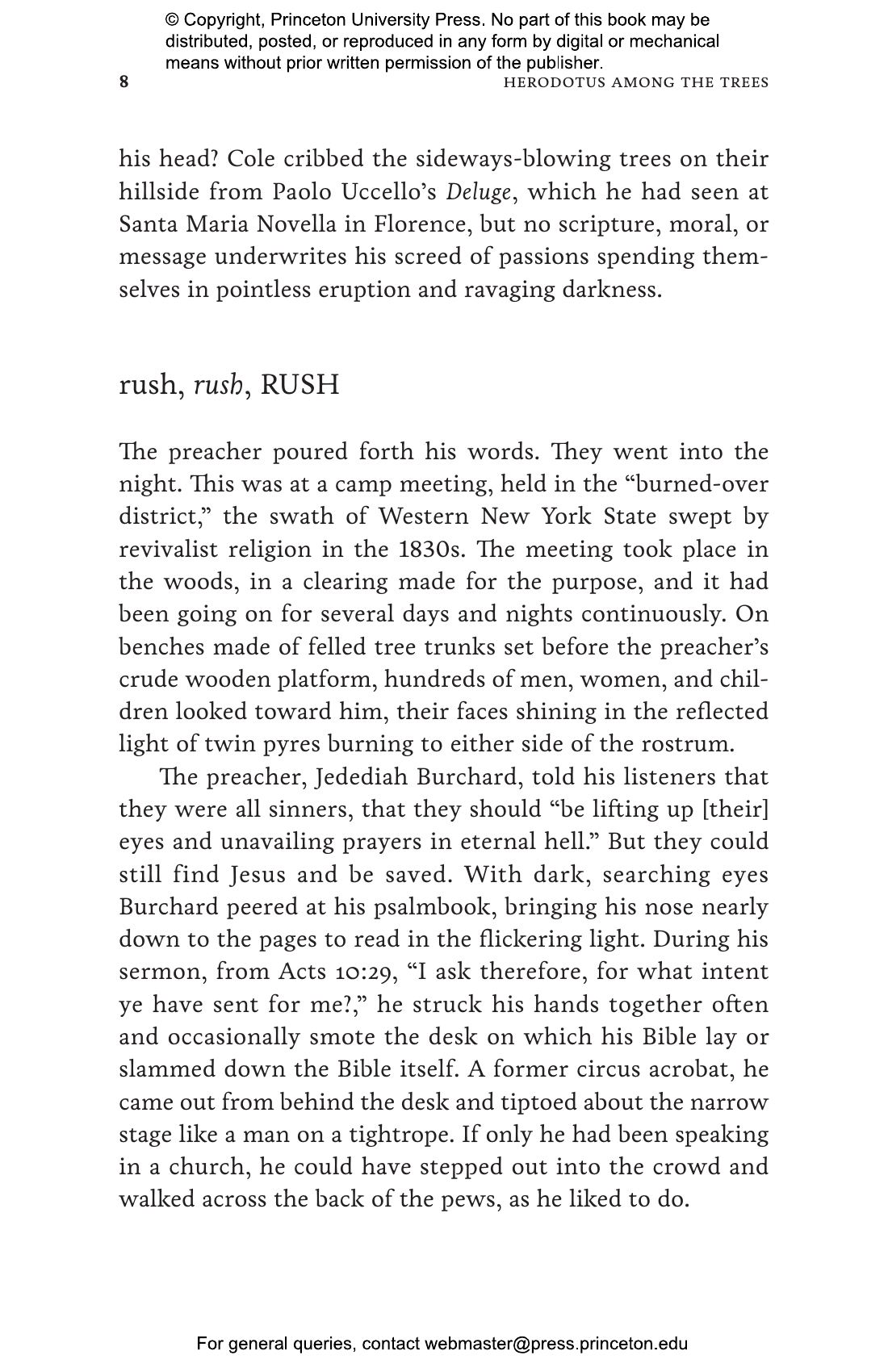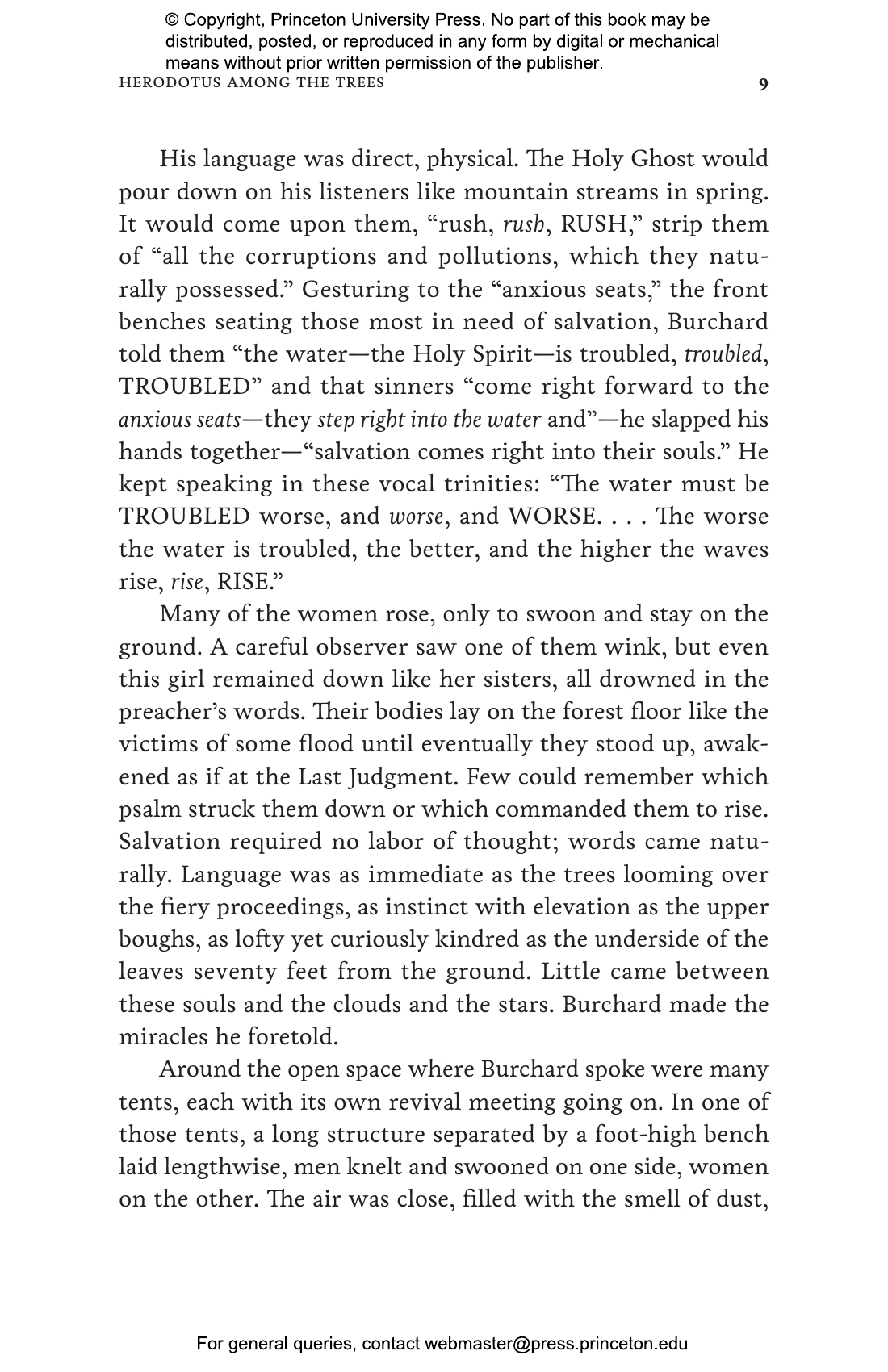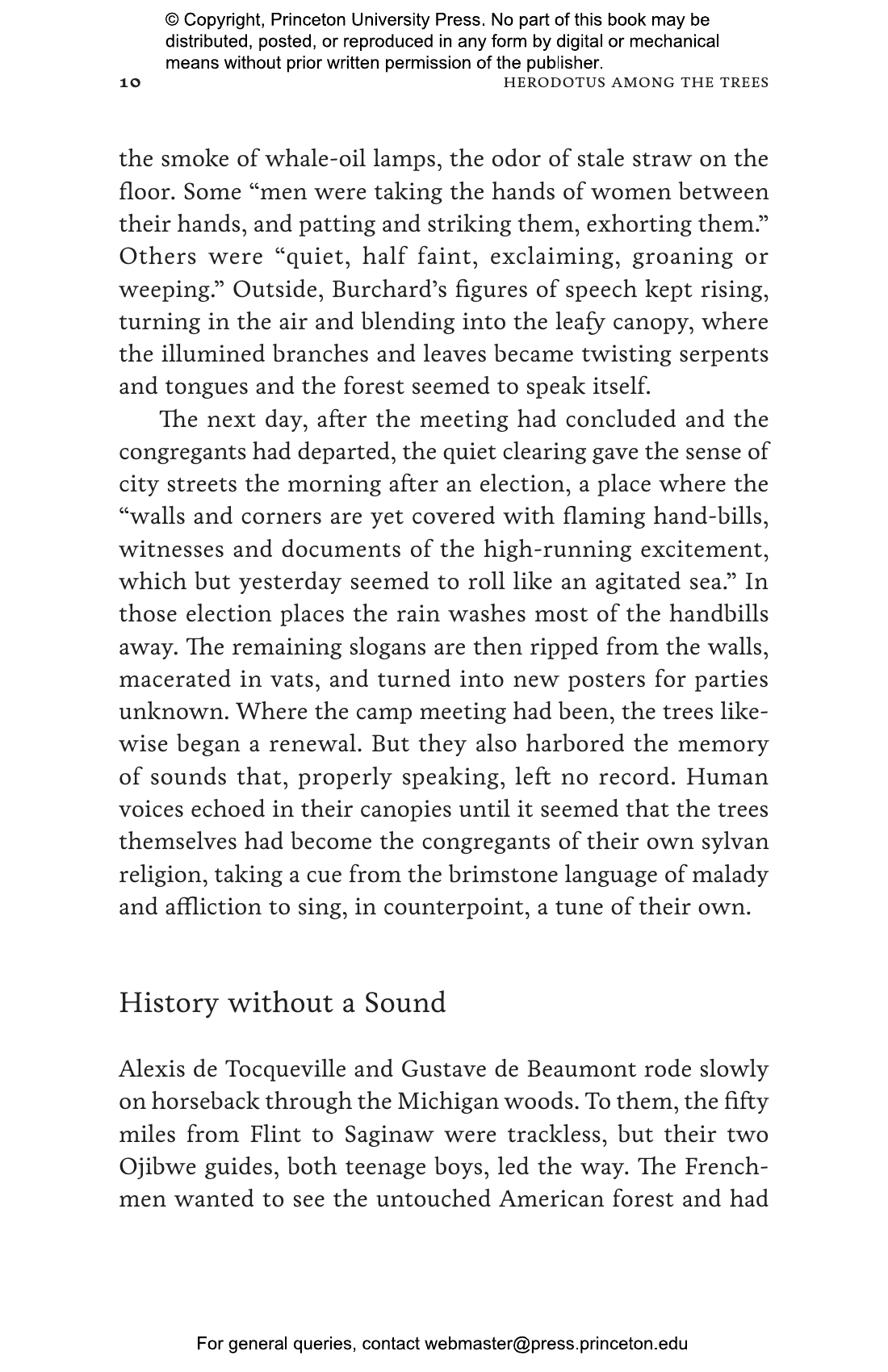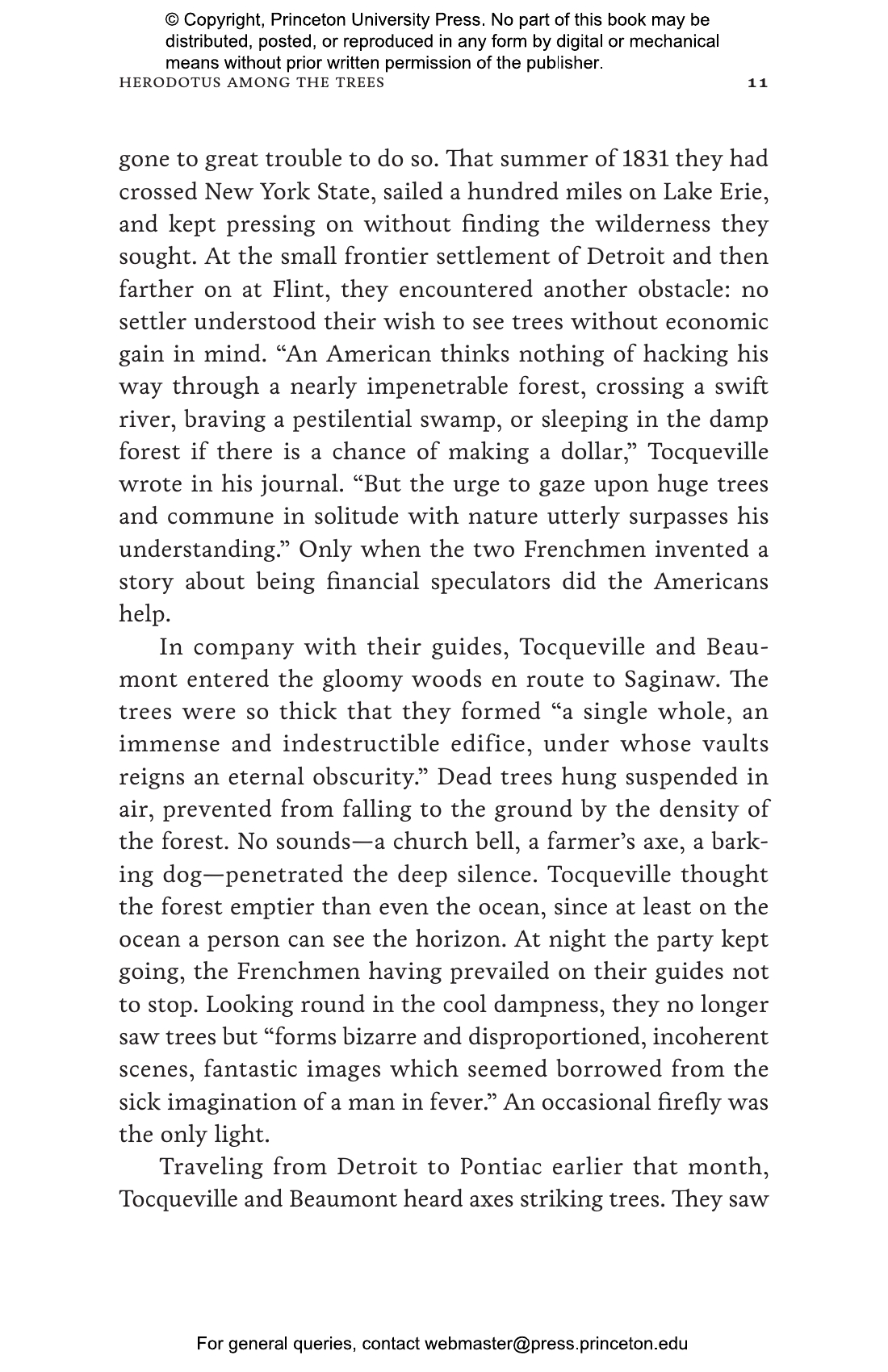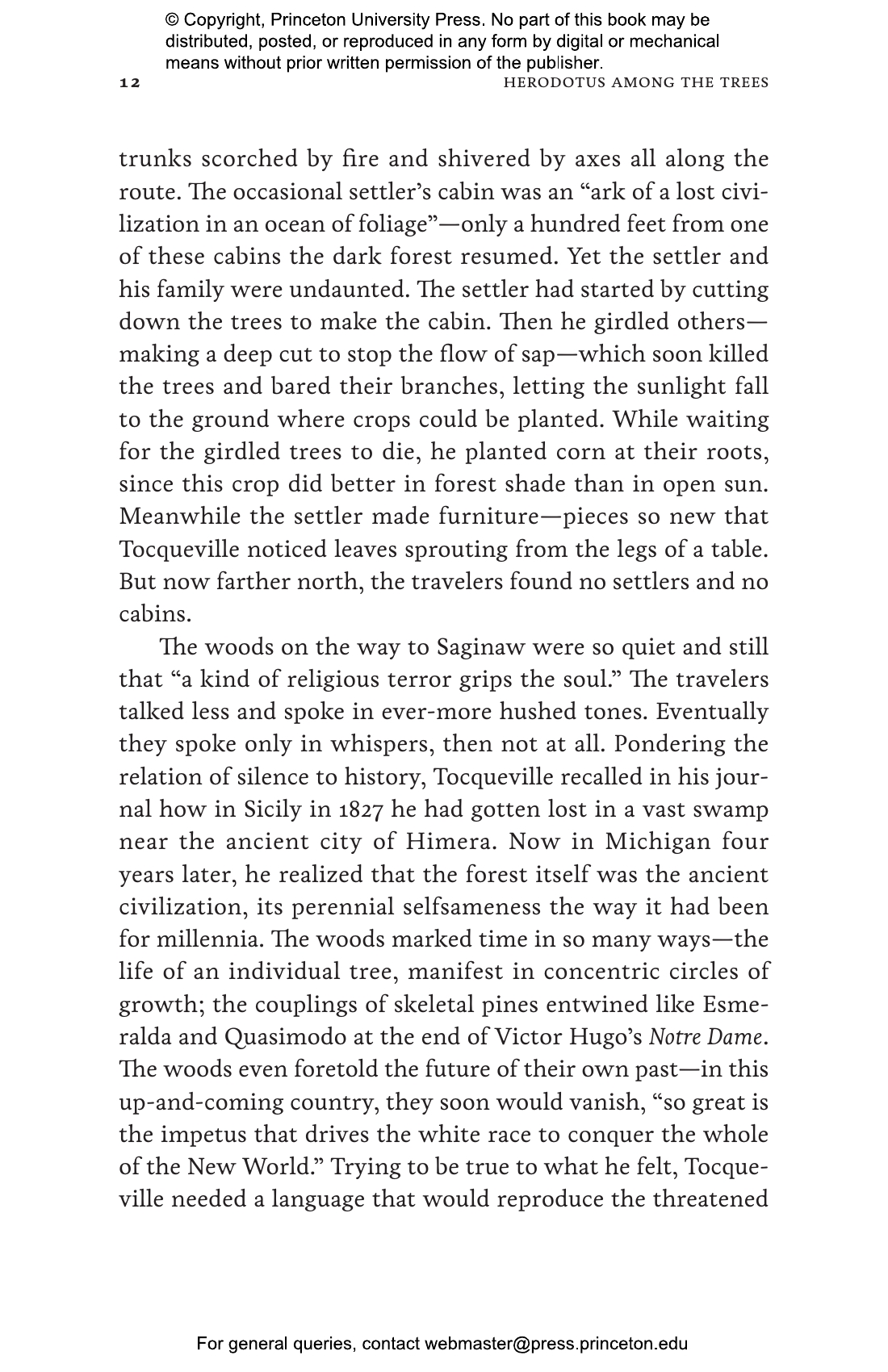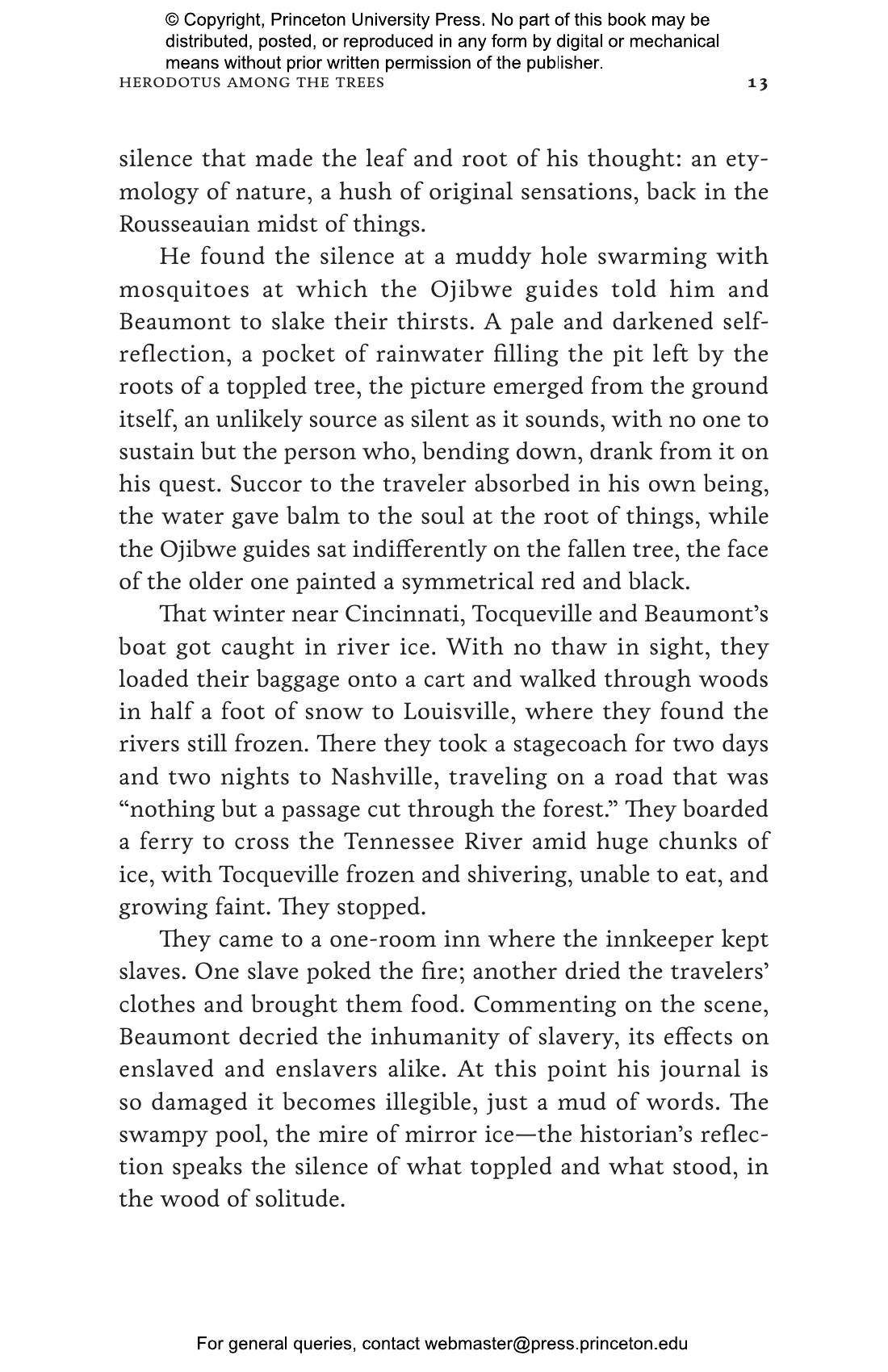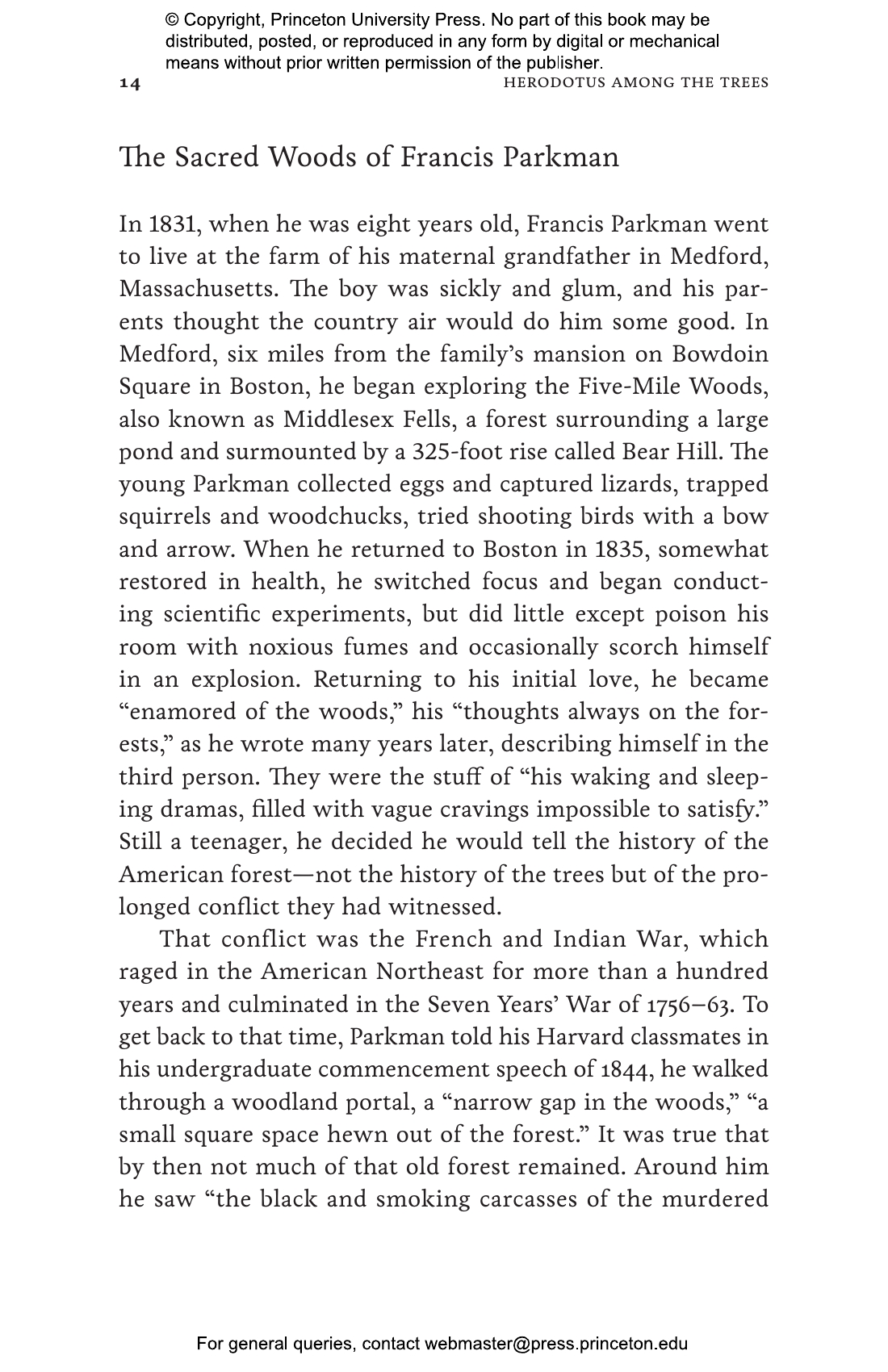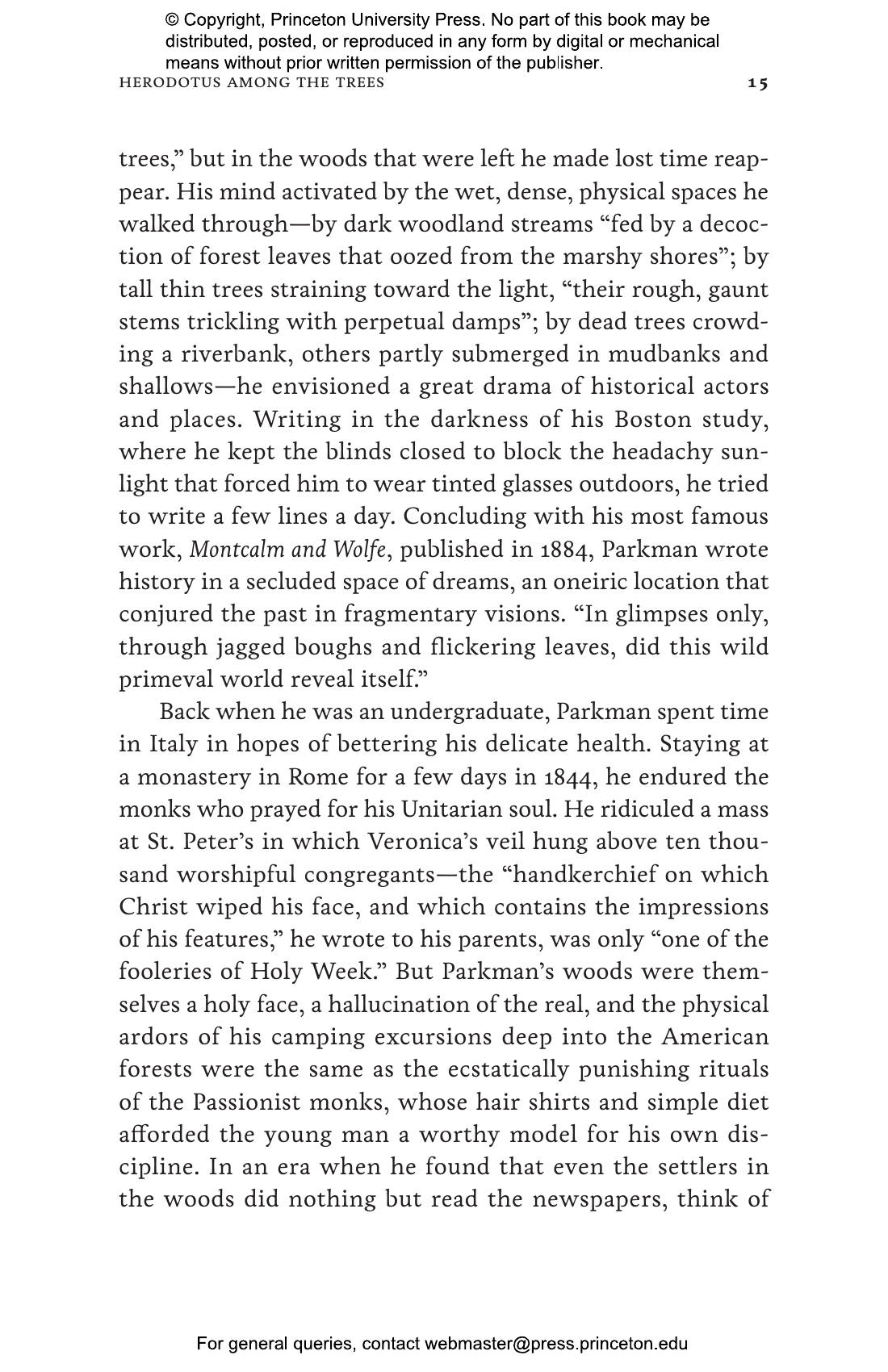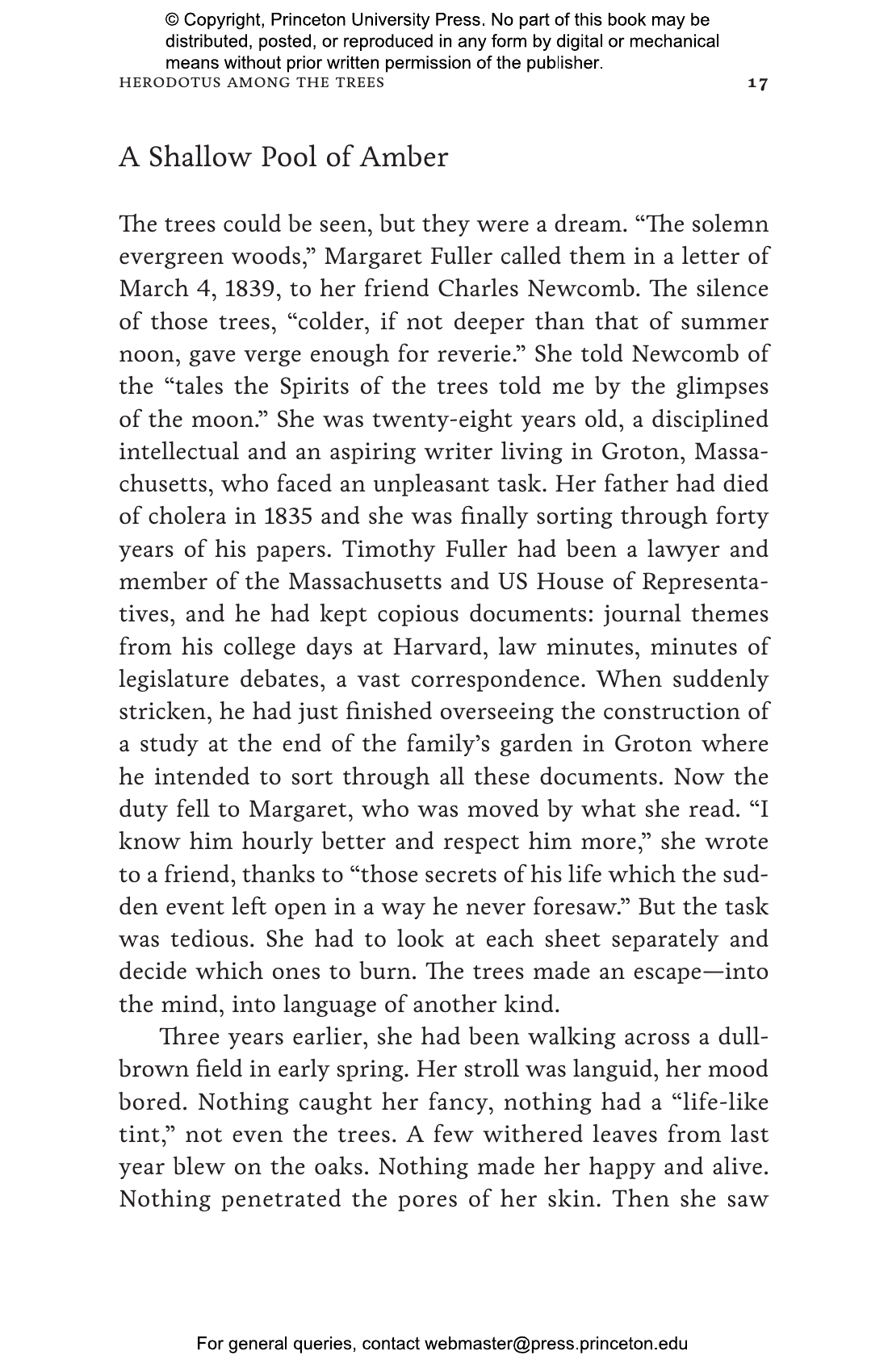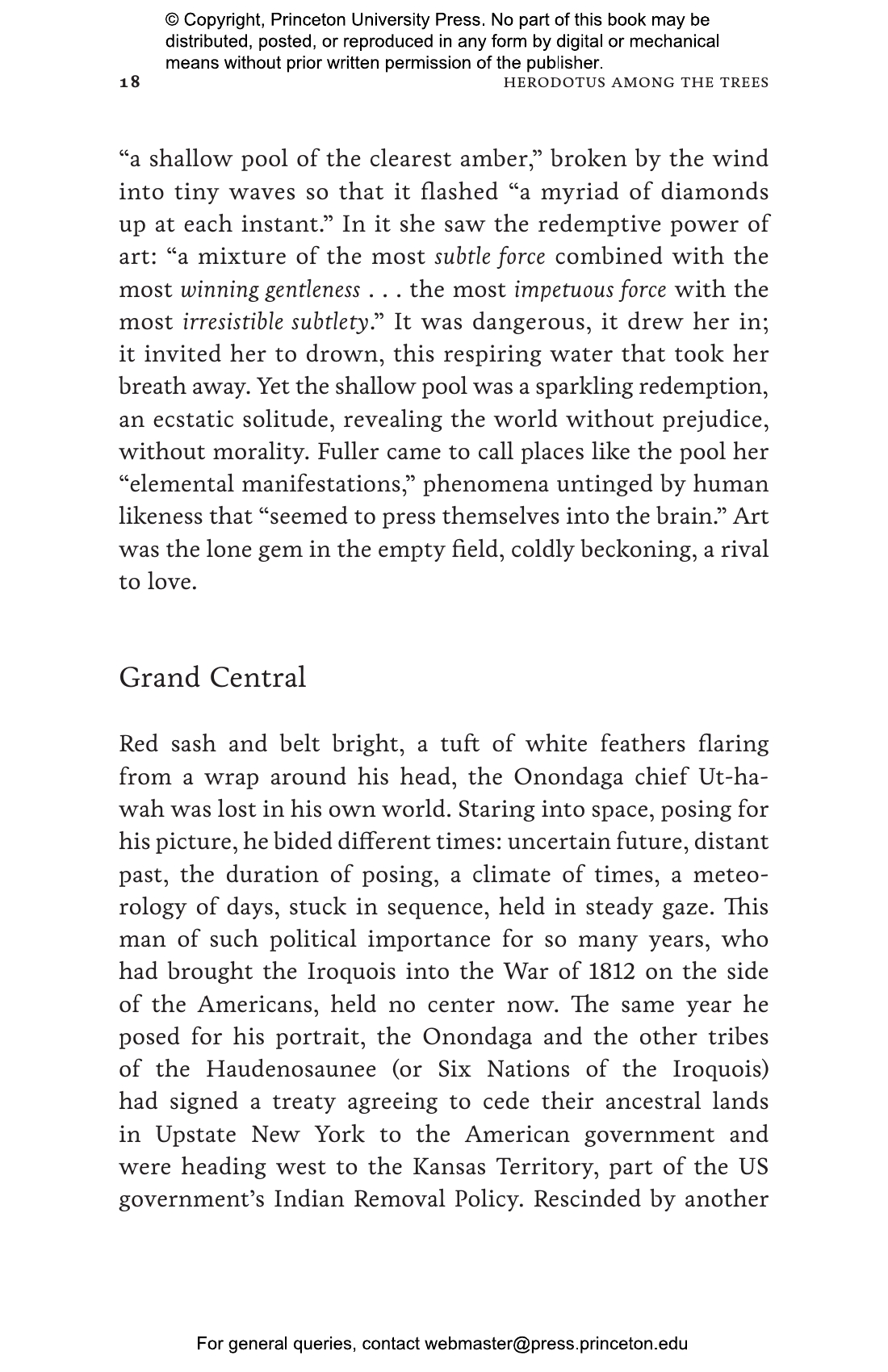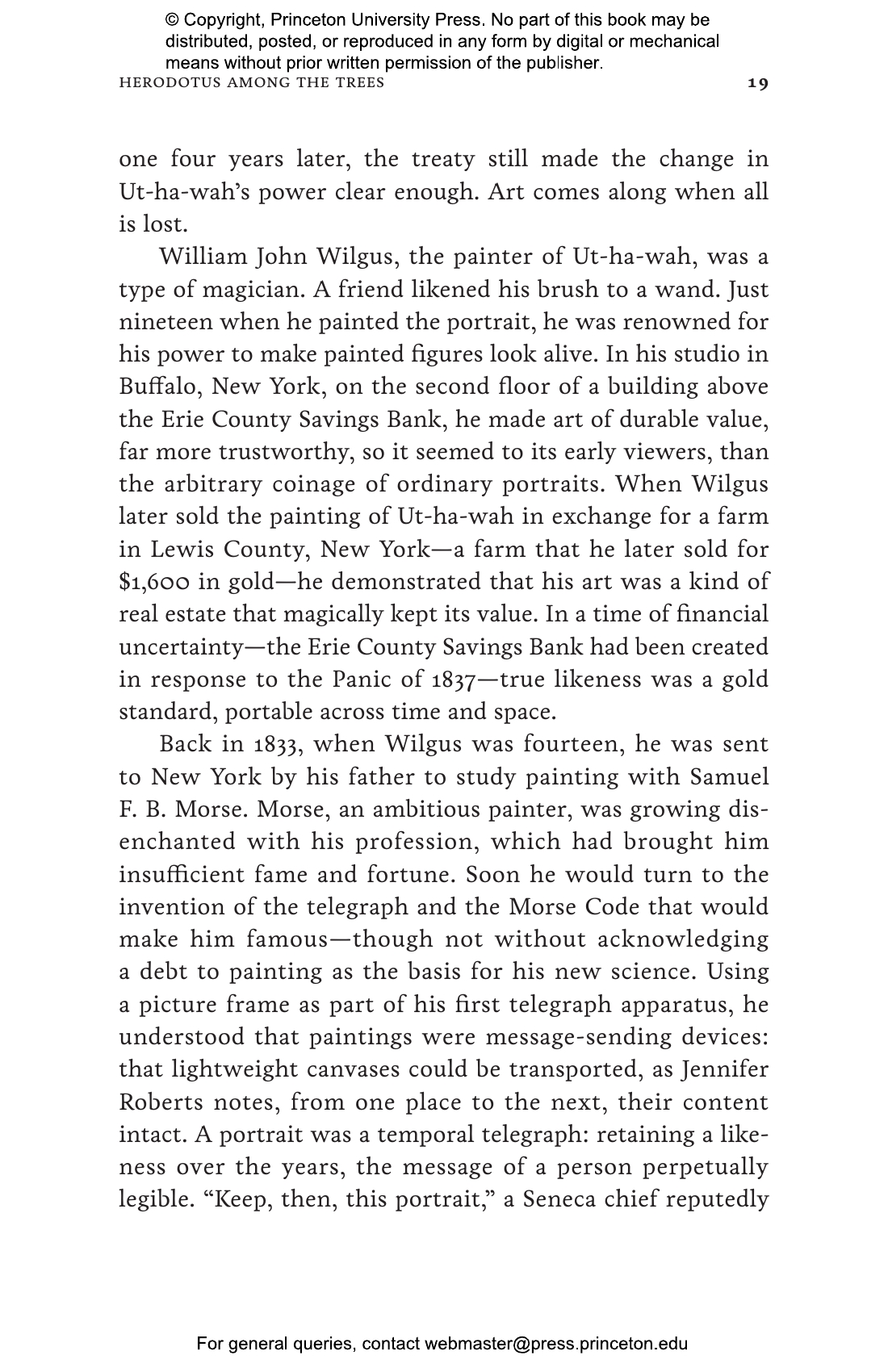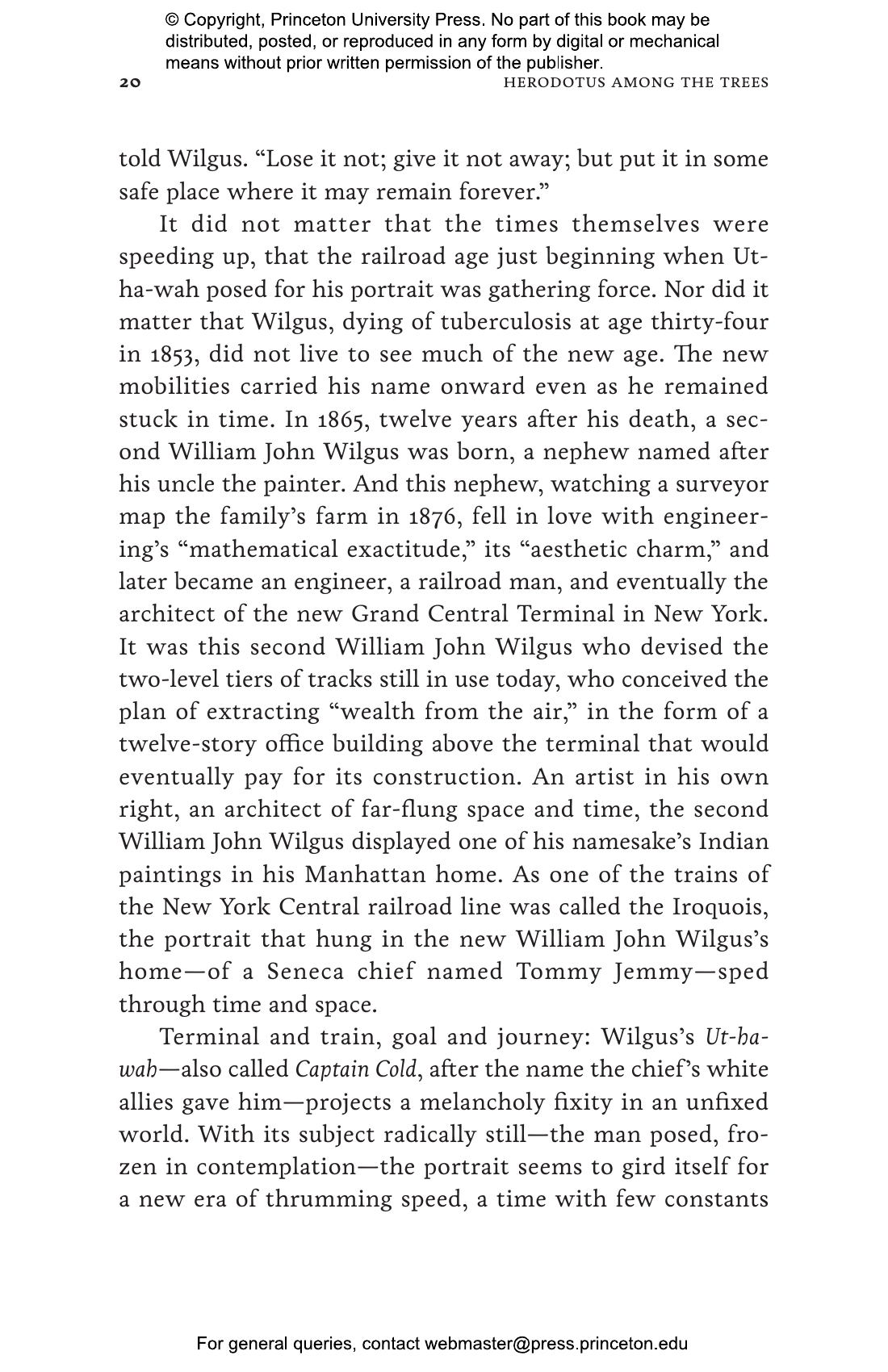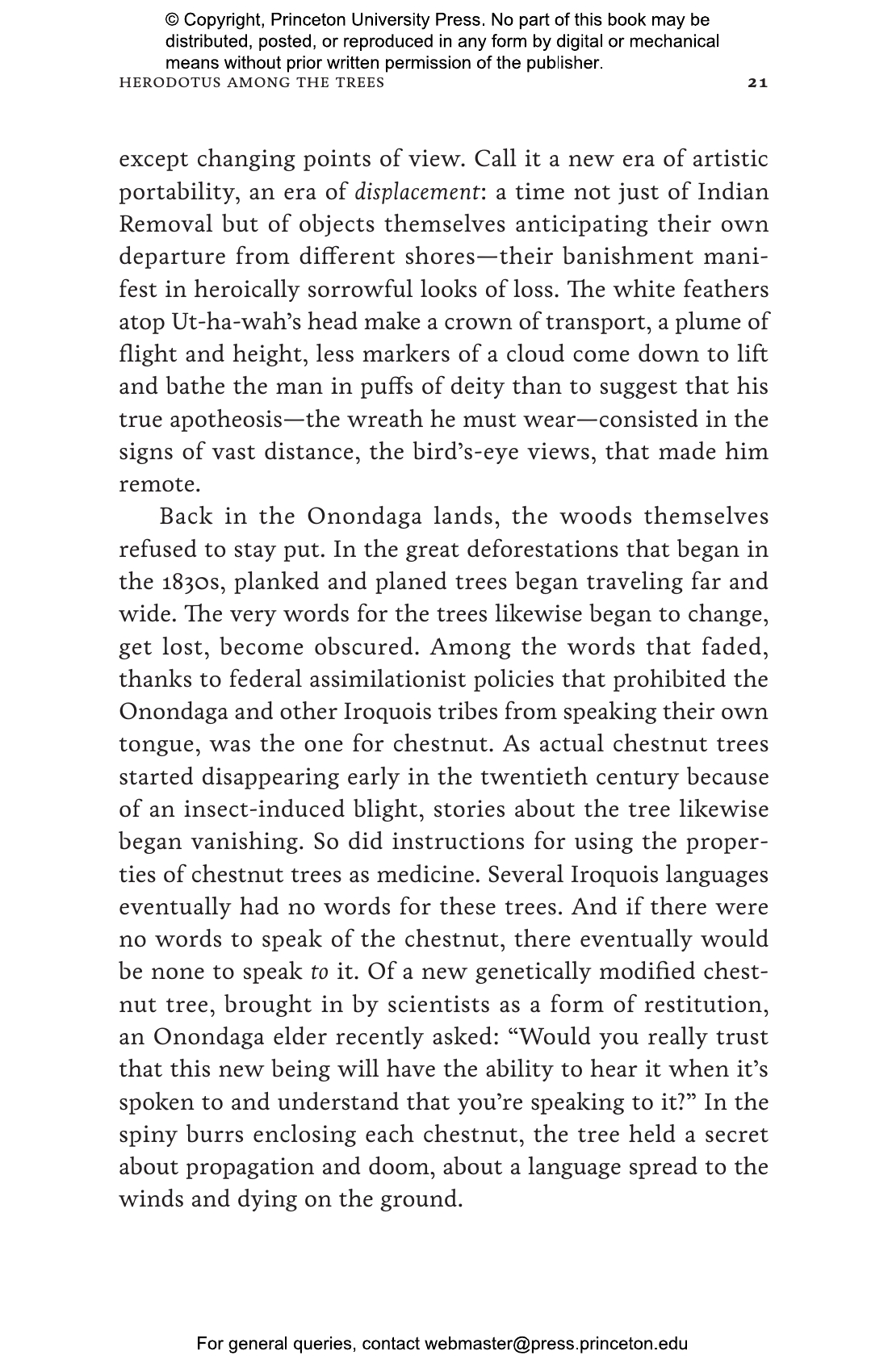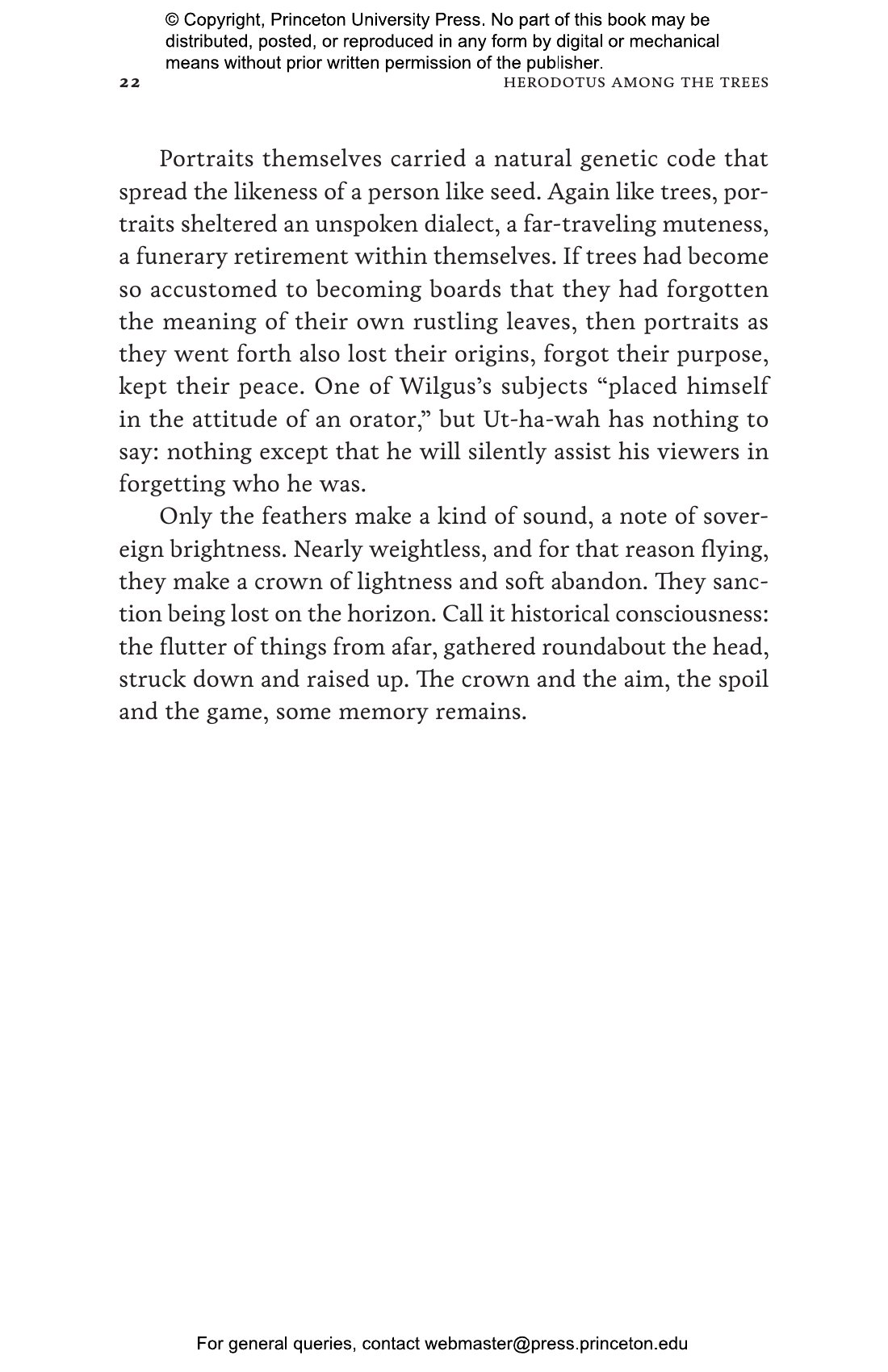Set amid the glimmering lakes and disappearing forests of the early United States, The Forest imagines how a wide variety of Americans experienced their lives. Part truth, part fiction, and featuring both real and invented characters, the book follows painters, poets, enslaved people, farmers, and artisans living and working in a world still made largely of wood. Some of the historical characters—such as Thomas Cole, Margaret Fuller, Nathaniel Hawthorne, Fanny Kemble, Edgar Allan Poe, and Nat Turner—are well-known, while others are not. But all are creators of private and grand designs.
The Forest unfolds in brief stories. Each episode reveals an intricate lost world. Characters cross paths or go their own ways, each striving for something different but together forming a pattern of life. For Alexander Nemerov, the forest is a description of American society, the dense and discontinuous woods of nation, the foliating thoughts of different people, each with their separate shade and sun. Through vivid descriptions of the people, sights, smells, and sounds of Jacksonian America, illustrated with paintings, prints, and photographs, The Forest brings American history to life on a human scale.
Published in association with the Center for Advanced Study in the Visual Arts, National Gallery of Art, Washington, DC
Awards and Recognition
- A Literary Hub Most Anticipated Book of the Year
"For each scene, [Alexander Nemerov] seems to have asked himself not merely how things would have looked in the 1830s but also how they would have sounded, felt, tasted and smelled. The Forest is easily one of the most pungent books I’ve read, an encyclopedia of vintage odors. . . . After you’ve read this book, most other cultural histories will seem as stale as the straw on the floor."—Jackson Arn, Wall Street Journal
"This vibrant collection liberally envisions America’s early cultural life through its forests, from Nathaniel Hawthorne, for whom trees were ‘arbors of thought,’ to Nat Turner, who planned his rebellion while secluded in the woods."—New York Times
"I really wish I’d written this book. The Forest is what one might dubiously call ‘a nonfiction novel,’ taking as it does the lives, both real and imagined, of multiple early inhabitants of America’s great forests—artists, tradesmen, farmers, poets, enslaved people—and turning them into fictionalized episodes. . . . This is history imagined as ecology."—Jonny Diamond, Literary Hub
"[A] beguiling study of American intellectual and cultural life two centuries ago at the places where forests and civilization met."—Kirkus Reviews starred review
"Alexander Nemerov . . . brings [an] unruly and uncanny world to life in his new book, The Forest. Neither history nor fiction, the book unspools over dozens of gem-like stories of man’s last real encounters with these ancient forests: Nat Turner’s woodland hiding place, the inscription of the Cherokee language both on trail trees and on paper, Harriet Tubman’s view of the Leonid meteor shower, the painter Thomas Cole’s top hat of felted-beaver fur."—Stephanie Bastek, Smarty Pants podcast
"[In] The Forest, readers have a chance to walk through the woods of the early 1800s—and discover that the often contradictory ways we relate to nature now have been with us at least since then. . . . [The book] peers closely at the art of the period in order to better capture how people then felt, thought and dreamed about themselves and the land."—Kiley Bense, Inside Climate News
"The stories are strikingly written with a siren-like poetic draw. . . . [An] historic, sylvan delight."—Kassie Rose, The Longest Chapter
"The Forest is Alexander Nemerov’s eccentric, impressionistic and strangely hypnotic reconstruction of American life before deforestation and standardisation. . . . Nemerov captures the fleeting spirit of a changing place."—Dominic Green, The Spectator
"A history of a lost era that's as moving and profound as great fiction. I'm not sure I've ever read anything that brought the past to such vivid life and made me feel so much like a time traveler."—James Crossley, Madison Books Seattle
"A book to be savored like poetry—start or finish your day with a few of these lush vignettes of early America’s forests and the artists, criminals, and visionaries who passed through them, poised between history and myth. I’ve never felt the nature of America's past—the trees and skies—quite like this."—Nora Sternlof, RJ Julia Booksellers
"The prose is lyric verging on the poetical, nonfiction verging on the speculative, but each of these often fantastical-seeming stories ends up getting buttressed by a veritable grove of references and cross-references in a Notes section at the back of the book, such that by the end who knows, or would necessarily want to know."—Lawrence Weschler
"Beautifully designed and a pleasure to hold, The Forest is one of 2023’s most intellectually unshackled books—and one of its best."—Point Reyes Books
"This is the story collection you didn’t know you need to read. The central theme is the great push of commerce and expansion of vast wild lands. The feelings are tangible of resonant energy in densest forests and hallowing absence in cleared lands. Wander these extraordinary writings and feel the otherness that distanced and draws you in this brilliant book. It’s like nothing I’ve read before."—Marilyn Smith, Kepler's Books
“This is a wonderful book, Sebaldian, digressive, moving and shocking and beautiful. It is an extraordinary achievement.”—Edmund de Waal, author of The Hare with Amber Eyes
"The Forest by Alexander Nemerov is one of the richest books ever to come my way. In deeply beautiful, achingly painful, and astonishingly tender prose, he describes the rape and taking of the American forests and the destruction of the country’s natural ecology. Nemerov is a master craftsman who constructs shapely sentences and paragraphs like handsome architecture.”—Annie Proulx, Pulitzer Prize–winning author of The Shipping News
"Nemerov writes with a poet’s precision and wildness. He tells the stories gently and quietly and ferociously all at the same time. This is a whole breathtaking world conceived through the presence and specter of trees. In the end, one might just say that this book is a prayer.”—Kevin Quashie, author of Black Aliveness, or A Poetics of Being
“Nemerov is the consummate poet of the past, steering history writing in a new direction through the power of his language. His images come from art history, popular culture, and history, but many are borne aloft only through the visual suggestiveness of his descriptions.”—Michael Ann Holly, author of The Melancholy Art
“The Forest is a series of richly imagined, gemlike tales that capture the worlds of nineteenth-century Americans. Born of tactile sensations and inspired by nature, this is literature as a kind of cultural history. Nemerov has forged a new genre of writing, prompting us all to think about the hidden fictions within our own efforts to reconstruct the past. Reading this extraordinary book made me love the nineteenth century anew.”—Angela L. Miller, coauthor of American Encounters: Art, History, and Cultural Identity
